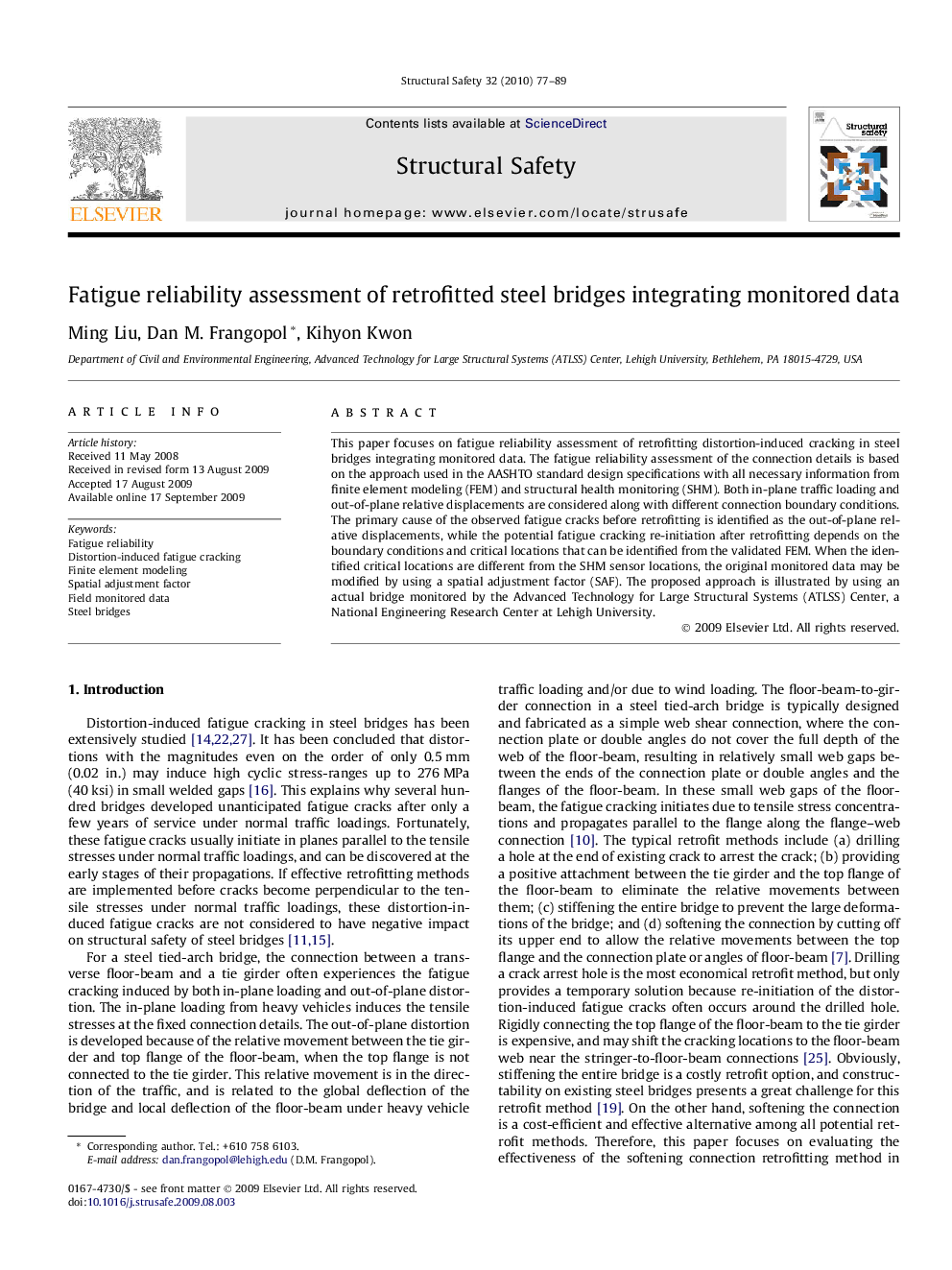| Article ID | Journal | Published Year | Pages | File Type |
|---|---|---|---|---|
| 307833 | Structural Safety | 2010 | 13 Pages |
This paper focuses on fatigue reliability assessment of retrofitting distortion-induced cracking in steel bridges integrating monitored data. The fatigue reliability assessment of the connection details is based on the approach used in the AASHTO standard design specifications with all necessary information from finite element modeling (FEM) and structural health monitoring (SHM). Both in-plane traffic loading and out-of-plane relative displacements are considered along with different connection boundary conditions. The primary cause of the observed fatigue cracks before retrofitting is identified as the out-of-plane relative displacements, while the potential fatigue cracking re-initiation after retrofitting depends on the boundary conditions and critical locations that can be identified from the validated FEM. When the identified critical locations are different from the SHM sensor locations, the original monitored data may be modified by using a spatial adjustment factor (SAF). The proposed approach is illustrated by using an actual bridge monitored by the Advanced Technology for Large Structural Systems (ATLSS) Center, a National Engineering Research Center at Lehigh University.
